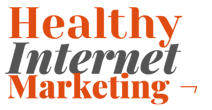A Japanese invention
Chi Exercise Machines were invented in Japan in the late 1980s as a type of passive exerciser that gives stress-free exercise while the user is lying down. The term “chi machine” is commonly used for these machines in the West as a generic category (“The Chi Machine” is registered as a Trade Mark by Chan-Hsiung Pan and others).
How can this be called “exercise” when the user is simply lying on their back, making no effort..!?
The “exercise effects” are created by swinging the user’s feet sideways, back-and-forth, while they are lying on their back. This generates a dynamic wave of sideways motion up and down the user’s spine at an oscillation frequency which can be fixed (one speed, as in the original Sun Ancon Chi Machine) or variable.
The user’s feet are supported on a cradle on the top of the device. When the motor is switched on the cradle swings back and forth at different speeds, depending on the model. This video shows clearly the movement throughout the spine (this video was produced by the company who manufacture the FlexxiCore and Surge of Chi Exercisers – both of which are available on this site. The video was produced some years ago and shows the Surge of Chi Exerciser Mark 2 – which was later upgraded to the FlexxiCore).
This video shows Bob and Brad, the American Physical Therapists, who review Chi Exercise Machines from the perspective of Western Medicine. They are demonstrating the Vitality Swing – also available on this website.
Similar to Oriental and Western Therapy Techniques
This feet-swinging concept is similar to techniques that are commonly used in therapies such as Shiatsu (Japanese massage) and Trager bodywork.
For the Japanese who came up with the original concept, the main purpose of creating this sideways oscillation – or “pulsing” – is to stimulate the area between the pelvis and the navel, which is known to the Japanese as the ‘hara’ – or dantian to the Chinese. This refers specifically to the area centered in the lower abdomen (below the navel).
The Japanese and Chinese consider this area to be the core of our energy system. Stimulating this part of the body has many potential benefits for health at a basic level. In Western medical terms the autonomic nervous system (which is locayed in the spinal column) is being stimulated. Users notice that their breathing gets deeper during a session on a Chi Exercise Machine. This shows that the body is experiencing a stimulating form of exercise as it responds naturally to the swinging of the feet.
Continuous Passive Motion for Backcare
Separately from these concepts that developed in Japan, the idea of creating Continuous Passive Motion (CPM) was developed in the West by spinal health professionals – initially in Canada. CPM equipment is used by osteopaths and other back care professionals to ease spinal problems by encouraging the flow of synovial fluid between the discs. This helps to reduce inflammation and ease pain by supplying nutrients and oxygen to the tissues, and also by helping to expel the toxins that arise from inflammation.
In a simple and much more economical way than the specialist CPM equipment used by surgeons which is expensive, the more advanced brands of Chi Exercise Machine combine the therapeutic back-care effects of CPM with the energizing, circulation-boosting and tension-releasing effects of the original Chi Machine.



